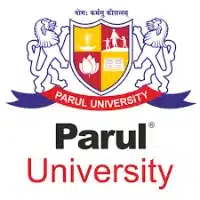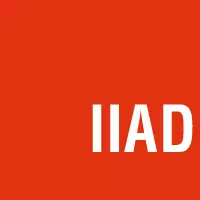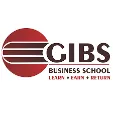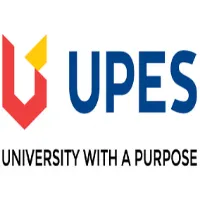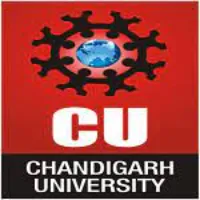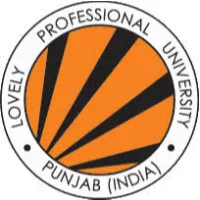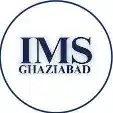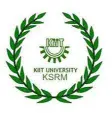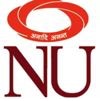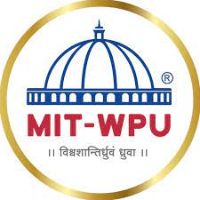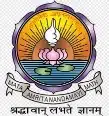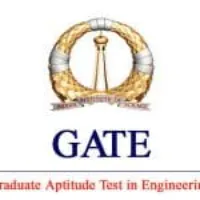
Latest Applications Open 2024:
The GATE 2025 Syllabus with Paper code has been Available in the articles. The Indian Institute of Technology, Roorkee, will oversee the GATE 2025 Exam, providing opportunities for admissions to ME/M. Tech and PhD courses in some of the most esteemed institutions across the nation. Additionally, GATE scores are utilized for PSU recruitments, offering positions such as Engineer Trainees and Management Trainees across various specializations. The official GATE Syllabus 2025, detailing the topic-wise distribution for all subjects, will be released by the conducting authority on its official portal @iitr.ac.in.
Aspiring students gearing up for the upcoming GATE 2025 exam can enhance their preparation by consulting the GATE 2025 syllabus. The GATE Syllabus 2025 PDF for disciplines such as CSE, Civil, Electrical, Mechanical, and others will encompass crucial chapters and topics essential for thorough preparation for the GATE 2025 exam.
In this blog post, we will delve into the detailed GATE syllabus for 2025, shedding light on the subjects and topics that candidates must master to excel in their chosen discipline. Join us as we explore the essential aspects of the GATE syllabus and equip you with the knowledge necessary to succeed in this prestigious examination.
GATE 2025 Syllabus – Available
![]() GATE 2025 New Syllabus has been Available now. Click to View Syllabus.
GATE 2025 New Syllabus has been Available now. Click to View Syllabus.
![]() GATE 2025 Syllabus with Paper Code has been available on 5th August 2023. Click to View Syllabus & Code.
GATE 2025 Syllabus with Paper Code has been available on 5th August 2023. Click to View Syllabus & Code.
What is the GATE Exam Syllabus
The GATE Exam Syllabus, or the Graduate Aptitude Test in Engineering syllabus, is a comprehensive outline of the topics and subjects that candidates must study to prepare for the GATE examination. The GATE exam is conducted jointly by the Indian Institute of Science (IISc) Bangalore and the seven Indian Institutes of Technology (IITs) at Bombay, Delhi, Guwahati, Kanpur, Kharagpur, Madras, and Roorkee.
Latest Applications For Various UG & PG Courses Open 2024
-
- Parul University | Admissions Open for All Courses 2024. Apply Now
- UPES Dehradun | Admissions Open for All Courses 2024. Apply Now
- Chandigarh University | Admissions Open for All Courses 2024. Apply Now
- LPU 2024 | Admissions Open for All Courses 2024. Apply Now
- IIAD, Delhi | Admissions Open for All Courses 2024. Apply Now
- GIBS, Bangalore | PGDM Applications Open. Package upto 15.5 LPA. Apply Now
- GNIOT, Greater Noida | Admissions Open for All Courses 2023. Apply Now
- The Design Village | Admissions Open for All Courses 2024. Apply Now
- IMS Ghaziabad UC Campus | Admissions Open for All Courses 2024. Apply Now
- KIIT School of Management | Admissions Open for All Courses 2024. Apply Now
- KSRM | Admissions Open for All Courses 2024. Apply Now
- Jaipuria Institute of Management | Admissions Open for All Courses 2024. Apply Now
- NIIT | Admissions Open for All Courses 2024. Apply Now
- MITWPU | Admissions Open for All Courses 2024. Apply Now
- Amrita B.Tech | Admissions Open for All Courses 2024. Apply Now
- KL University | Admissions Open for All Courses 2024. Apply Now
- Alliance MBA | Admissions Open for All Courses 2024. Apply Now
- Alliance UG | Admissions Open for All Courses 2024. Apply Now
The GATE syllabus assesses the candidate’s understanding and proficiency in their fields of study. It covers various subjects, including engineering, science, and technology, and is specific to disciplines such as Computer Science, Mechanical Engineering, Electrical Engineering, Civil Engineering, and more.
The syllabus serves as a roadmap for candidates, guiding them on the essential topics and subtopics they should focus on during their exam preparation. It helps candidates organize their study plan, allocate time effectively, and delve deep into the subject matter to gain a thorough understanding.
GATE Syllabus 2025 All Subjects (CSE, ECE, Electrical, Mechanica, Civil) – Free Download Syllabus PDFs
Candidates can choose any discipline from the above list and appear for the GATE exam. It is recommended to initiate their preparation using the previous year’s GATE syllabus. Once the GATE 2025 syllabus is released, candidates can align their study materials and topics accordingly. The subject-wise syllabus for GATE 2025 can be downloaded by candidates for their reference and better preparation.
The GATE Exam Syllabus 2025 covers 29 disciplines or subjects, providing a comprehensive outline for candidates preparing for the GATE Exam. Candidates have the flexibility to choose from the wide range of disciplines available.
Syllabus for Engineering Branches
The syllabus for engineering branches encompasses the subjects and topics that students will study throughout their academic journey. It includes various subjects such as mathematics, physics, chemistry, and specialized engineering courses. The syllabus aims to give students a strong foundation in scientific principles and technical knowledge relevant to their chosen engineering field. It prepares them for diverse subjects and equips them with the necessary skills to excel in their careers.
Here to Download the Engineering Syllabus PDF. Check the below tables-
Syllabus for Engineering Sciences (XE)
The Engineering Sciences (XE) syllabus covers various topics essential for engineering studies. It includes mathematics, materials science, fluid mechanics, solid mechanics, and thermodynamics. This comprehensive syllabus aims to equip engineering students with the fundamental knowledge and skills required. By studying these subjects, students will gain a strong foundation in various engineering principles and be prepared to tackle real-world challenges in their chosen discipline.
Here to Download the Engineering Sciences (XE) Syllabus PDF. Check the below tables-
| Syllabus | Code | Syllabus | Code |
| Engineering Mathematics | (XE-A) | Fluid Mechanics | (XE-B) |
| Material Science | (XE-C) | Solid Mechanics | (XE-D) |
| Thermodynamics | (XE-E) | Polymer Science & Engineering | (XE-F) |
| Food Technology | (XE-G) | Atmospheric and Oceanic Sciences | (XE-H) |
Syllabus for Engineering Sciences (XL)
The Engineering Sciences (XL) syllabus covers various subjects essential for engineering students. It includes mathematics, physics, chemistry, and basic engineering principles. This syllabus aims to provide a strong foundation in the sciences and equip students with the necessary knowledge and skills to excel in their engineering studies. It offers a comprehensive understanding of key concepts and principles applicable across various engineering disciplines.
Here to Download the Engineering Sciences (XL) Syllabus PDF. Check the below tables-
| Chemistry | (XL-P) | Biochemistry | (XL-Q) |
| Botany | (XL-R) | Microbiology | (XL-S) |
| Zoology | (XL-T) | Food Technology | (XL-U) |
In this article, GATE Syllabus 2025 has been provided for the students and aspirants with a Paper code for all the branches, and Also GATE 2025 Exam Pattern is provided. GATE 2025 is a national-level exam organized by IISc Banglore (IISc). The Engineering Graduation Skill Test (GATE) is organized for admission to PG courses in engineering and technology, specifically ME / M.Tech.
GATE 2025 Two Paper Combination
The following table gives the codes of test papers allowed as the second paper for the candidate’s choice of the first paper. This is subject to the availability of infrastructure and scheduling constraints.
| Code of the First Paper | Codes of the Second Paper | Code of the First Paper | Codes of the Second Paper |
| AE | CE, ME, XE | GE | AR, CE, CS, ES, GG |
| AG | CE | GG | GE |
| AR | CE, GE | IN | BM, EC, EE, ME |
| BM | BT, IN | MA | CS, DA, PH, ST |
| BT | BM, XL | ME | AE, DA, IN, NM, PI, XE |
| CE | AE, AG, AR, ES, GE, NM, XE | MT | XE |
| CH | ES, PE, XE | NM | CE, ME |
| CS | DA, EC, GE, MA, PH, ST | PE | CH |
| CY | XE, XL | PH | CS, DA, EC, EE, MA, XE |
| DA | CS, EC, EE, MA, ME, ST, XE | PI | ME, XE |
| EC | CS, DA, EE, IN, PH | ST | CS, DA, MA, XH |
| EE | DA, EC, IN, PH | XE | AE, CE, CH, CY, DA, ME, MT, PH, PI |
| ES | CE, CH, GE | XH | ST |
| EY | XL | XL | BT, CY, EY |
GATE New Subjects
The GATE exam syllabus has seen recent additions in the form of new subjects. In the 2022 syllabus, Environmental Science and Engineering (ES) and Humanities and Social Sciences (XH) in Economics, English, Linguistics, Philosophy, Psychology, and Sociology were introduced.
Continuing the trend, the 2023 syllabus included Naval Architecture and Marine Engineering (NM) and Geomatics Engineering (GE) as new subjects. These additions reflect the evolving nature of the GATE exam, accommodating emerging disciplines and providing candidates with more diverse choices to pursue their academic and professional aspirations.
GATE Syllabus 2025 – Subject Wise Topics
The GATE Syllabus for 2025 covers a wide range of subjects, including Mechanical Engineering, Computer Science, Electrical Engineering, Civil Engineering, and more, providing in-depth knowledge of subject-specific topics to prepare candidates for the examination.
General Aptitude Syllabus
The General Aptitude syllabus covers essential skills and knowledge for problem-solving, critical thinking, and effective communication, providing a foundation for success in various fields and examinations. It encompasses quantitative aptitude, logical reasoning, verbal ability, and analytical skills.
Biomedical Engineering Syllabus
| Verbal Ability | Numerical Ability |
| Engineering Mathematics | Electrical Circuits |
| Analog and Digital Electronics | Signals and Systems |
| Measurement and Digital Electronics | Sensors and Bio instrumentations |
| Medical Imaging System | Biomaterials |
| Human Anatomy and Physiology | Biomechanics |
Aerospace Engineering Syllabus
| Verbal Ability | Numerical Ability |
| Fourier Series | Laplace Transforms |
| Numerical methods for linear and nonlinear algebraic equations | Numerical integration and differentiation. |
| Dynamic stability | Euler angle |
| Equations of motion | Aerodynamic forces and moments, stability & control derivatives |
| Decoupling of longitudinal and lateral-directional dynamics | Longitudinal modes; lateral-directional modes. |
| Orbit transfer | In-plane and out-of-plane |
| Elementary ideas of viscous flows, including boundary layers | Wind Tunnel Testing |
| Measurement and visualization techniques | Vibration of beams |
| Theory of elasticity | Equilibrium and compatibility equations |
| Airy’s stress function |
Agriculture Engineering Syllabus
| Verbal Ability | Numerical Ability |
| Engineering Mathematics | Farm Machinery |
| Farm Power | Soil and Water Conservation Engineering |
| Irrigation and Drainage Engineering | Agricultural Processing Engineering |
| Dairy and Food Engineering |
Architecture & Planning Syllabus
| Verbal Ability | Numerical Ability |
| Architecture and Design | Building Materials, Construction, and Management |
| Building and Structures | Environmental Planning and Design |
| Urban Design | Urban Planning and Housing |
| Planning Techniques and Management | Services, Infrastructure, and Transportation |
Biotechnology Syllabus
| Verbal Ability | Numerical Ability |
| Engineering Mathematics | General Biotechnology |
| Recombinant DNA Technology | Plant and Animal Biotechnology |
| Bioprocess Engineering and Process Biotechnology |
Civil Engineering Syllabus
| Verbal Ability | Numerical Ability |
| Engineering Mathematics | Structural Engineering |
| Geotechnical Engineering | Water Resources Engineering |
| Environmental Engineering | Transportation Engineering |
| Geomatics Engineering |
Chemical Engineering Syllabus
| Verbal Ability | Numerical Ability |
| Engineering Mathematics | Process Calculations and Thermodynamics |
| Fluid Mechanics and Mechanical Operations | Heat Transfer |
| Mass Transfer | Chemical Reaction Engineering |
| Instrumentation and Process Control | Plant Design and Economics |
| Chemical Technology |
Computer Science and Information Technology Syllabus
| Verbal Ability | Numerical Ability |
| Engineering Mathematics | Digital Logic |
| Computer Organization and Architecture | Programming and Data Structures |
| Algorithms | Theory of Computation |
| Compiler Design | Operating System |
| Databases | Computer Networks |
Chemistry Syllabus
| Physical Chemistry | Organic Chemistry |
Inorganic Chemistry | – |
Electronics and Communication Engineering Syllabus
| Verbal Ability | Numerical Ability |
| Engineering Mathematics | Networks, Signals, and Systems |
| Electronic Devices | Analog Circuits |
| Digital Circuits | Control System |
| Communication | Electromagnetics |
Electrical Engineering Syllabus
| Verbal Ability | Numerical Ability |
| Engineering Mathematics | Electrical Circuits |
| Electromagnetic Fields | Signals and Systems |
| Electrical Machines | Power Systems |
| Control Systems | Electrical and Electronic Measurements |
| Analog and Digital Electronics | Power Electronics |
Environmental Science & Engineering Syllabus (New)
| Verbal Ability | Numerical Ability |
| Environmental Management and Sustainable Development | Environmental Chemistry |
| Environmental Microbiology | Water Resources and Environmental Hydraulics |
| Water & Wastewater Treatment and Management | Air and Noise Pollution |
| Solid and Hazardous Waste Management | Global and Regional Environmental Issues |
Ecology and Evolution Syllabus
| Ecology | Evolution |
| Mathematics and Quantitative Ecology | Behavioural Ecology |
| Geology And Geophysics Syllabus | |
| Geology | Geophysics |
Geology And Geophysics Syllabus
| Geology | Geophysics |
Instrumentation Engineering Syllabus
| Verbal Ability | Numerical Ability |
| Engineering Mathematics | Control Systems |
| Electrical Circuits | Analog and Digital Electronics |
| Signals and Systems | Measurements |
| Sensors and Industrial Instrumentation | Communication and Optical Instrumentation |
Mathematics Syllabus
| Verbal Ability | Numerical Ability |
| Calculus | Linear Algebra |
| Rear Analysis | Complex Analysis |
| Ordinary Differential Equations | Algebra |
| Functional Analysis | Numerical Analysis |
| Partial Differential Equations | Topology |
| Linear Programming |
Mechanical Engineering Syllabus
| Engineering Mathematics | Applied Mechanics and Design |
| Fluid Mechanics and Thermal Science | Material, Manufacturing and Industrial Engineering |
Mining Engineering Syllabus
| Verbal Ability | Numerical Ability |
| Engineering Mathematics | Mine Development Surveying |
| Geomechanics and Ground Control | Mining Methods and Machinery |
| Surface Environment, Mine Ventilation, and Underground Hazards | Mine Economics, Mine Planning, System Engineering |
Metallurgical Engineering Syllabus
| Verbal Ability | Numerical Ability |
| Engineering Mathematics | Thermodynamics and Rate Process |
| Extractive Metallurgy | Physical Metallurgy |
| Mechanical Metallurgy | Manufacturing Process |
Physics Syllabus
| Verbal Ability | Numerical Ability |
| Mathematical Physics | Classical Mechanics |
| Electromagnetic Theory | Quantum Mechanics |
| Thermodynamics and Statistical Physics | Atomic and Molecular Physics |
| Solid State Physics and Electronics | Nuclear and Particle Physics |
Production and Industrial Engineering Syllabus
| Verbal Ability | Numerical Ability |
| Engineering Mathematics | General Engineering |
| Manufacturing Processes | Quality and Reliability |
| Industrial Engineering | Operation Research and Operational Management |
Textile Engineering Syllabus
| Engineering Mathematics | Textile Engineering and Fibre Science |
XE-A (Engineering Mathematics Syllabus)
| Verbal Ability | Numerical Ability |
| Linear Algebra | Calculus |
| Vector Calculus | Ordinary Differential Equations |
| Partial Differential Equations | Complex variables |
| Probability and Statistics | Numerical Methods |
XE-B (Fluid Mechanism Syllabus)
| Verbal Ability | Numerical Ability |
| Flow and Fluid Properties | Kinematics |
| Integral analysis | Differential Analysis |
| Inviscid flows | Dimensional analysis |
| Internal flows | Prandtl boundary layer equations |
XE-C (Material Sciences Syllabus)
| Verbal Ability | Numerical Ability |
| Processing of Materials | Characterization Techniques: |
| Structure and Imperfections | Thermodynamics and Kinetics |
| Properties of Materials | Material types |
| Environmental Degradation | Elements of Quantum Mechanics and Mathematics |
XE-E (Thermodynamics Syllabus)
| Verbal Ability | Numerical Ability |
| Basic Concepts | Law of Thermodynamics |
| Thermodynamics Cycle | Thermodynamics Relations |
| Ideal Gas Mixtures |
XE-F (Polymer Science and Engineering Syllabus)
| Verbal Ability | Numerical Ability |
| Chemistry of high polymers | Polymer Characterization |
| Synthesis and properties | Polymer blends and composites |
| Polymer Technology | Polymer rheology |
| Polymer processing | Polymer testing |
XE-G (Food Technology Syllabus)
| Verbal Ability | Numerical Ability |
| Food Chemistry and Nutrition | Food Microbiology |
| Food Products Technology | Food Engineering |
XL-P (Chemistry Syllabus)
| Verbal Ability | Numerical Ability |
| Atomic Structure and Periodicity | Structure and Bonding |
| s, p and d Block Elements | Chemical Equilibria |
| Electrochemistry | Reaction Kinetics |
| Thermodynamics | Structure-Reactivity Correlations and Organic Reaction Mechanisms |
XL-R (Botany Syllabus)
| Verbal Ability | Numerical Ability |
| Plant Systematics | Plant Anatomy |
| Morphogenesis & Development | Physiology and Biochemistry |
| Genetics | Plant Breeding and Genetic Modification |
| Economic Botany | Plant Pathology |
| Ecology and Environment | – |
XL-S (Microbiology Syllabus)
| Verbal Ability | Numerical Ability |
| Historical Perspective | Methods in Microbiology |
| Microbial Taxonomy and Diversity | Prokaryotic and Eukaryotic Cells: Structure and Function |
| Microbial Growth | Control of Micro-organisms |
| Microbial Metabolism | Microbial Diseases and Host-Pathogen Interaction |
| Chemotherapy/Antibiotics | Microbial Genetics |
| Microbial Ecology |
XL-T (Zoology Syllabus)
| Verbal Ability | Numerical Ability |
| Animal world | Genetics |
| Evolution | Biochemistry and Molecular Biology |
| Cell Biology | Gene expression in Eukaryotes |
| Animal Anatomy and Physiology | Parasitology and Immunology |
| Development Biology | Ecology |
| Animal Behavior | |
| XH-B1 (Reasoning and Comprehension) (New) | |
| Reading Comprehension | Expression |
| Analytical reasoning | Logical reasoning |
| XH-C1 (Economics) (New) | |
| Statistics, Econometrics and Mathematical Economics | Microeconomics |
| Macroeconomics | International Economics |
| Public Economics | Development Economics |
| Indian Economy | – |
| XH-C3 (Linguistics) (New) | |
| Areal Typology, Universals, Cross-linguistic Features | Language and Linguistics |
| Levels of Grammar and Grammatical Analysis | Historical Linguistics |
| Sociolinguistics | Methods of analysis |
| Applied Linguistics | – |
| XH-C4 (Philosophy) (New) | |
| Classical Indian Philosophy | Contemporary Indian Philosophy |
| Classical and Modern Western Philosophy | Contemporary Western Philosophy |
| XH-C5 (Psychology) (New) | |
| Perception, Learning, Memory, and Forgetting | Cognition: Thinking, Intelligence, and Language |
| Research Methods and Statistics | Psychometrics |
| The biological and evolutionary basis of behaviour | Personality |
| Applications of Psychology | Motivation, Emotion, Stress and Coping |
| Social psychology | Development across the lifespan |
| XH-C6 (Sociology) (New) | |
| Family, Marriage, and Kinship | Sociological Theory |
| Research Methodology and Methods | Sociological Concepts |
| Agrarian Sociology and Rural Transformation | Indian Society / Sociology of India |
| Social Movements | Sociology of Development |
Once students have carefully examined the GATE Syllabus PDF categorized by branch or subject, they can begin their exam by utilizing appropriate GATE preparation books, study notes, question papers, and other relevant reference materials. Practising with the previous year’s GATE papers will further enhance students’ performance in the GATE exams.
GATE Syllabus 2025 for CSE (Computer Science) – Topic-Wise Weightage
GATE Syllabus 2025 for CSE (Computer Science) – Topic-Wise Weightage. As the GATE CSE syllabus 2025 is eagerly awaited, candidates can find the PDF download link on the official GATE 2025 website once it is released. Candidates must know the topic-wise weightage within the GATE CSE syllabus 2025.
By referring to the GATE syllabus CSE 2025, candidates can identify the importance and weightage assigned to each topic. This knowledge allows candidates to strategically plan their preparation, focusing on the critical topics outlined in the GATE syllabus 2025 for CSE. We will also discuss the expected weightage in marks for the GATE 2025 CSE syllabus to provide further insight. Join us as we delve into the topic-wise weightage of the GATE syllabus 2025 for CSE and help you streamline your exam preparation accordingly.
| GATE Topic | Expected Weightage in Marks |
| Theory of Computation | 7.5 |
| Operating System | 9 |
| Compiler Design | 2.75 |
| General Aptitude | 15 |
| Computer Organization & Architecture | 9 |
| Computer Networks | 7.5 |
| Programming & Data Structures | 10.5 |
| Soft. Engg/ Web Technology | 1.5 |
| Algorithms | 8 |
| Engineering Maths | 14.75 |
| Digital Logic | 5.25 |
| Database | 7.5 |
GATE Syllabus 2025 for Electrical Engineering – Topic-Wise Weightage
The “GATE Syllabus 2025 for Mechanical Engineering – Topic-Wise Weightage”! In this section, we will explore the syllabus for Mechanical Engineering in GATE 2025 and provide insights into the weightage assigned to each topic. By understanding the topic-wise weightage, candidates can prioritize their preparation and allocate their time effectively.
The GATE syllabus for Mechanical Engineering covers a wide range of subjects and concepts crucial for the examination. Join us as we analyze the topic-wise weightage within the GATE syllabus 2025 for Mechanical Engineering, empowering you to focus on the key areas and enhance your chances of success in the GATE 2025 examination.
| GATE Topics | Expected Weightage in Marks |
| Network Theory | 11.75 |
| Signal & System | 8.5 |
| Control Systems | 9 |
| Power Systems | 9.75 |
| Electrical machines | 8.25 |
| Electrical & Electronics Measurements | 4.5 |
| Analog & Digital Electronics | 11.25 |
| EMT | 2.75 |
| General Aptitude | 15 |
| Engineering Maths | 11.75 |
| Power Electronics | 7.5 |
GATE Syllabus 2025 for Instrumentation Engineering (Topic Wise Weightage)
This section will discuss the “GATE Syllabus 2025 for Instrumentation Engineering – Topic-Wise Weightage.” The GATE exam plays a significant role in shaping the future of aspiring Instrumentation Engineering students. To excel in the GATE 2025 examination, candidates must thoroughly understand the topic-wise weightage within the syllabus.
By knowing the weightage assigned to each topic, candidates can prioritize their preparation and allocate their time accordingly. In this section, we will explore the syllabus for Instrumentation Engineering in GATE 2025 and analyze the weightage of each topic. Join us as we unravel the topic-wise weightage in the GATE syllabus 2025 for Instrumentation Engineering, helping you focus on the crucial areas and optimize your preparation strategy for the upcoming examination.
| Topic | Expected weightage |
| Analogue circuits | 11.75 |
| Measurements | 6.25 |
| Communications | 1.5 |
| Control System | 10.75 |
| Digital Circuits | 7 |
| Analytical Biomedical & Optical Instrumentation | 4.25 |
| Circuits & Networks | 10.25 |
| General Aptitude | 15 |
| Signals and Systems | 7.75 |
| Transducers | 12.25 |
| Engg Maths | 11.75 |
| Process Controls | 1.5 |
GATE 2025 Syllabus for Civil Engineering – Topic-Wise Weightage
This section will explore the “GATE 2025 Syllabus for Civil Engineering – Topic-Wise Weightage.” The GATE exam holds immense significance for aspirants in Civil Engineering. To excel in the GATE 2025 examination, candidates must comprehensively understand the syllabus and the weightage assigned to each topic.
The GATE Civil Engineering syllabus for 2025 encompasses the necessary topics for study. This section provides you with the GATE syllabus 2025 for Civil Engineering and the corresponding weightage. Candidates can easily access and download this page’s GATE 2025 CE syllabus PDF. Join us as we navigate the topic-wise weightage in the GATE syllabus 2025 for Civil Engineering, enabling you to streamline your preparation and boost your chances of success in the upcoming examination.
| Topic | Weightage |
| SOM | 7.75 |
| Structural Analysis | 3.5 |
| FM and Hydraulic machine | 6.75 |
| Irrigation & Hydrology | 7.75 |
| RCC and Prestressed concrete | 6.5 |
| Geo-Technical | 15.25 |
| Design of Steel Structures | 4.25 |
| Highway & Surveying | 12 |
| Engineering Mathematics | 12.25 |
| General Aptitude | 15 |
| Environment Engg | 9 |
GATE 2025 Syllabus for Electronics and Communication Engineering
The “GATE 2025 Syllabus for Electronics and Communication Engineering” is of utmost importance for candidates aspiring to pursue this field. The GATE exam is a gateway to numerous opportunities in higher education and employment. To excel in the GATE 2025 examination, candidates must thoroughly understand the syllabus specific to Electronics and Communication Engineering.
This comprehensive syllabus covers essential topics and concepts necessary for success in the exam. By familiarizing themselves with the GATE 2025 ECE syllabus, candidates can effectively plan their preparation and allocate time to each subject accordingly. Join us as we delve into the GATE 2025 Electronics and Communication Engineering Syllabus, providing you with the necessary insights to excel in this competitive examination.
| Topic | Weightage |
| Network Theory | 11.25 |
| Electronics Devices & Circuits | 7.25 |
| Digital Circuits | 6 |
| Signal & Systems | 9 |
| Analog Circuits | 11.75 |
| Control Systems | 9 |
| Communication Systems | 10.75 |
| EMT | 9.5 |
| Engineering Maths | 10.5 |
| General Aptitude | 15 |
| Micro Processors | 1.5 |
GATE 2025 Syllabus Paper Wise Sectional-weightage
The GATE 2025 syllabus consists of paper-wise sectional weightage, providing candidates with a clear understanding of the distribution of topics across different sections and enabling focused preparation for the examination.
|
GATE Syllabus
| Sectional-weightage | ||
| General Aptitude | Engineering Mathematics | Core Discipline | |
| Aerospace Engineering (AE) | 15 marks | 13 marks | 72 marks |
| Agricultural Engineering (AG) | 15 marks | 13 marks | 72 marks |
| Architecture and Planning (AR) | 15 marks | — | Part A: 60 marks Part B (B1 or B2): 25 marks |
| Biomedical Engineering (BM) | 15 marks | 13 marks | 72 marks |
| Biotechnology (BT) | 15 marks | 13 marks | 72 marks |
| Civil Engineering (CE) | 15 marks | 13 marks | 72 marks |
| Chemical Engineering (CH) | 15 marks | 13 marks | 72 marks |
| Computer Science & Information Technology (CS) | 15 marks | 13 marks | 72 marks |
| Chemistry (CY) | 15 marks | — | 85 marks |
| Electronics & Communication Engineering (EC) | 15 marks | 13 marks | 72 marks |
| Electrical Engineering (EE) | 15 marks | 13 marks | 72 marks |
| Environmental Science and Engineering (ES) | 15 marks | 13 marks | 72 marks |
| Ecology and Evolution (EY) | 15 marks | — | 85 marks |
| Geomatics Engineering (GG) | 15 marks | — | Part A: 55 marks Part B (Section I or Section II): 30 marks |
| Geology and Geophysics (GG) | 15 marks | — | Part A: 25 marks Part B (Geology or Geophysics): 60 marks |
| Instrumentation Engineering (IN) | 15 marks | 13 marks | 72 marks |
| Mathematics (MA) | 15 marks | — | 85 marks |
| Mechanical Engineering (ME) | 15 marks | 13 marks | 72 marks |
| Mining Engineering (MN) | 15 marks | 13 marks | 72 marks |
| Metallurgical Engineering (MT) | 15 marks | 13 marks | 72 marks |
| Naval Architecture & Marine Engineering (NM) | 15 marks | 13 marks | 72 marks |
| Petroleum Engineering (PE) | 15 marks | 13 marks | 72 marks |
| Physics (PH) | 15 marks | — | 85 marks |
| Production & Industrial Engineering (PI) | 15 marks | 13 marks | 72 marks |
| Statistics (ST) | 15 marks | 13 marks | 72 marks |
| Textile Engineering and Fibre Science (TF) | 15 marks | 13 marks | 72 marks |
| Engineering Sciences (XE) Syllabus | 15 marks | 15 marks | 70 marks |
| Humanities and Social Sciences (XH) | 15 marks | — | Reasoning & Comprehension: 25 marks Core Discipline: 60 marks |
| Life Sciences (XL) Syllabus | 15 marks | — | Chemistry: 25 marks Core Discipline: 60 marks |
GATE 2025 Changes in Syllabus
As of the current information available, no changes have been made to the GATE 2025 Syllabus. Candidates appearing for the exam in 2025 can access the GATE free PDF of the syllabus either from the official website or our page. By referring to the syllabus, candidates can identify the important chapters and topics within each domain, enabling them to focus their preparation effectively and maximize their chances of success in the examination.
GATE 2025 Exam Pattern
The exam pattern highlights essential details such as the number of papers, total marks, duration, types of questions (MCQs or NATs), and marking scheme. By knowing the exam pattern, candidates can familiarize themselves with the question paper’s layout and allocate time efficiently during the exam. Additionally, understanding the marking scheme helps maximise scores by focusing on high-value questions. Therefore, it is crucial to check and delve into the GATE 2025 Exam Pattern to optimize preparation strategies and achieve success in the examination.
GATE 2025 Exam will be for a total of 100 Marks. The duration of the Exam will be of 3 Hours (180 Mins) for the complete paper. Candidates can also check the GATE 2025 Entrance Exam for Better Preparation for the GATE 2025. IIT Bombay is conducting the GATE 2025, and It has released the GATE 2025 Exam Pattern.
Exam pattern contains the Number of Questions, Number of Marks, Negative MARKING, Exam Duration, Topic Wise Weightage, Mode of Exam, Language of Exam, etc. The GATE 2025 Entrance Exam consists of two types of Questions, i.e., Multiple Choice and Numerical.
| Particulars | Details |
| Examination Mode | Computer-Based Test (Online) |
| Duration | 3 Hours |
| Number of Papers in GATE 2025 | 29 Papers |
| Section |
|
| Type of Questions |
|
| Design of Questions |
|
| Number of Questions | 65 Questions (including 10 questions from General Aptitude) |
| Distribution of Questions in all Papers except AR, CY, EY, GG, MA, PH, and XL | Engineering Mathematics – 13 Marks Subject Questions – 72 Marks General Aptitude – 15 Marks |
| Distribution of Questions in AR, CY, EY, GG, MA, PH, XH, and XL | Questions from Subject Concerned – 85 Marks General Aptitude – 15 Marks |
| Total Marks | 100 Marks |
| Marking Scheme | All of the questions will be worth 1 or 2 marks |
Click Here to View Previous Year’s Questions Papers.
Architecture and Planning (AR) New Pattern 2025
The GATE 2025 exam introduces a new pattern for the Architecture and Planning (AR) paper, consisting of two parts: Part A and Part B. In this introduction, we will provide an overview of the new pattern for the AR paper and highlight key points to be noted.
The AR paper now includes the General Aptitude (GA) section, which carries 15 marks, as applicable to all GATE 2025 papers. Part A of the paper holds a weightage of 60 marks and is compulsory for all candidates. On the other hand, Part B is divided into two optional sections: Part B1 (Architecture) and Part B2 (Planning), contributing 25 marks.
This revised pattern assesses the candidates’ knowledge and skills in Architecture and Planning while evaluating their general aptitude. Candidates must carefully prepare for both parts of the paper, ensuring a comprehensive understanding of the syllabus to excel in the GATE 2025 AR examination.
Find the details of the Section Wise marks’ distribution
| Paper Code | Marks Distribution |
| Distribution of Questions in all Papers except AR, CY, EY, GG, MA, PH, XH and XL | General Aptitude (GA) – 15, Engineering Mathematics -13, and The subject of the Paper – 72 |
| Distribution of Questions in AR, CY, EY, GG, MA, PH, XH, and XL | General Aptitude (GA)- 15 and The subject of the Paper- 85 |
| Paper Codes | General Aptitude (GA) Marks | Subject Marks | Total Marks | Total Time (Minutes) |
| AE, AG, BT, CE, CH, CS, CY, EC, EE, ES, EY, IN, MA, ME, MN, MT, PE, PH, PI, TF, ST, and BM | 15 | 85 | 100 | 180 |
| GG [Part A + Part B (Section 1 Geology Or Section 2 Geophysics)] | 15 | 25 + 60 | 100 | 180 |
| AR [Part A + Part B (Section 1 Architecture Or Section 2 Planning)] | 15 | 25 + 60 | 100 | 180 |
| XE (Section A + Any Two Sections) | 15 | 15 + (2 x 35) | 100 | 180 |
| XH (Section B1 + Any One Section) | 15 | 25 +( 1 x 60) | 100 | 180 |
| XL (Section P + Any Two Sections) | 15 | 25 + (2 x 30) | 100 | 180 |
GATE 2025 Syllabus Codes for Exam Papers
The GATE 2025 exam covers various disciplines, each identified by a unique syllabus code, enabling candidates to focus on their respective subject areas during the preparation process.
| Code of the First (Primary) Paper | Codes of Papers Allowed as the Second Paper | Code of the First (Primary) Paper | Codes of Papers Allowed as the Second Paper |
| AE | NM, XE | IN | BM, EC, EE, PH |
| AG | ES, GE, XL, XE | MA | CS, GE, PH, ST |
| AR | CE, GE | ME | AE, CH, NM, PI, XE |
| BM | BT, EC, IN, XL | MN | GE, GG, XE |
| BT | BM, XL | MT | PH, XE |
| CE | AE, AR, ES, GE, NM, XE | NM | AE, CE, XE |
| CH | PE, XE | PE | CH, GG, XE |
| CS | EC, GE, MA, PH, ST | PH | EC, GE, GG, IN, MA, MT, ST, XE |
| CY | XE, XL | PI | ME, MT, XE |
| EC | IN, PH, EE, CS, GE | ST | MA, PH |
| EE | EC, IN, PH | TF | XE |
| ES | AG, CE, GE | XE | AE, AG, CH, ME, MN, MT, PE, PI, TF, NM |
| EY | XL | XH | ST |
| GE | CE, GG, ES, MN | XL | BM, BT, CY, EY |
| GG | GE, MN, PE, PH, XE | * | * |
GATE Detailed Syllabus for CSIT
The Graduate Aptitude Test in Engineering (GATE) is a highly competitive examination for admission to postgraduate programs in various engineering disciplines. The detailed Computer Science and Information Technology (CSIT) syllabus covers various subjects, including algorithms, computer networks, databases, programming languages, and more, providing a comprehensive understanding of the field’s core concepts and technologies.
Engineering Mathematics
| Discrete Mathematics | Sets, Functions, Partial Orders and Latices, Groups, Relations, Monoids Graphs, Combinatorics, general functions |
| Linear Algebra | Matrices, System of linear equations, eigenvectors, and eigenvalues |
| Calculus | Maxima and Minima, Mean value theorem, limits and continuity, differentiability |
| Probability and Statistics | Uniform, normal, Poisson and binomial distribution, Mean, median, standard deviation, mode. Conditional Probability and Bayes Theorem |
Computer Science and Information Technology
| Digital Logic |
Boolean algebra
Number Representation Combinational and sequential circuits Minimization |
| Computer Organization and Architecture |
Machine instructions and addressing modes
ALU Instruction Pipelining Pipeline hazards Memory hierarchy Data path and control unit I/O interface |
| Programming and Data Structures |
Recursion
Arrays Queues Trees Binary search trees Graphs |
| Algorithms |
Searching
Hashing Algorithms Space complexity Algorithm Design Asymptotic worst-case time Graph traversals Minimum spanning trees Dynamic programming and divide and conquer Shortest paths |
| Theory of Computation |
Context-free grammars
Regular expressions Finite Automata Turing machines and undecidability Push down automata Pumping lemma |
| Compiler Design |
Runtime environments
Parsing Syntax-directed translation Intermediate code generation Data flow analysis Liveness analysis Common subexpression elimination Local optimisation Lexical analysis |
| Operating System |
Processes
Threads Inter-process communication Concurrency and synchronization Deadlock CPU and I/O scheduling File system |
| Database |
Relational Algebra
Tuple calculus Relational model SQL Integrity constraints normal forms Transactions and concurrency control |
| Computer Networks |
Basics of packet
Circuit and virtual circuit switching Framing Error detection Ethernet bridging Data link layer Medium access control Routing protocols (shortest path, flooding, distance vector and link state routing) Application layer protocols Transport layer Basics of IP support protocols CIDR notations Fragmentation and IP addressing Address Translation |
GATE Detailed Syllabus for Mechanical
The Graduate Aptitude Test in Engineering (GATE) is a highly competitive examination that assesses the knowledge and aptitude of candidates seeking admission to postgraduate programs in engineering and technology. For mechanical engineering and civil engineering disciplines, the GATE detailed syllabus provides a comprehensive outline of the topics covered, enabling candidates to prepare effectively for the exam and enhance their chances of success.
Engineering Mathematics
| Linear Algebra | Systems Of Linear Equations Matrix Algebra Eigenvalues And Eigenvectors |
| Calculus | Limit Functions Of A Single Variable Continuity and Differentiability Indeterminate Forms Mean Value Theorems Evaluation Of Definite And Improper Integrals Taylor Series (In One And Two Variables) Partial Derivatives Double And Triple Integrals Total Derivative Fourier Series Maxima and Minima Gradient, Divergence And Curl Directional Derivatives Vector Identities Line, Surface and Volume Integrals Applications Of Gauss Theorem, Stokes, and Green’s Theorems |
| Differential Equation | Initial and Boundary Value Problems Higher-Order Linear Differential Equations With Constant Coefficients First-Order Equations (Linear And Nonlinear) Euler-Cauchy Equation Laplace Transforms Solutions of heat, wave and Laplace’s equations |
| Complex Variables | Taylor and Laurent Series Cauchy-Riemann Equations Analytic Functions Cauchy’s Integral Theorem and Integral Formula |
| Probability and Statistics | Definitions Of Probability, Sampling Theorems, Conditional Probability Median, Mean, Mode, and Random Variables Binomial Poisson and Normal Distributions |
| Numerical Methods | Integration By Trapezoidal and Simpson’s Rules Numerical Solutions Of Linear And Non-Linear Algebraic Equations Single and Multi-Step Methods For Differential Equations |
Applied Mechanics and Design
| Engineering Mechanics |
Friction And Its Applications, Including Rolling Friction
Free-Body Diagrams and Equilibrium Screw Jack Brakes Belt-Pulley Clutches Vehicles Wedge Trusses and Frames Virtual Work Impulse And Momentum (Linear and Angular) and Energy Formulations Kinematics And Dynamics Of Rigid Bodies in Plane Motion Lagrange’s Equation |
| Mechanics of Materials |
Thin Cylinders
Elastic Constants Stress and Strain Poisson’s Ratio Mohr’s Circle For Plane Stress And Plane Strain Bending and Shear Stresses Shear Force And Bending Moment Diagrams Deflection Of Beams Concept Of Shear Centre Euler’s Theory Of Columns Torsion Of Circular Shafts Thermal Stresses Energy Methods Testing Of Materials With a Universal Testing Machine Strain Gauges and Rosettes Testing Of Hardness and Impact Strength |
| Theory of Machines |
Velocity and Acceleration Analysis Of Plane Mechanisms
Dynamic Analysis Of Linkages Displacement Cams Gears and Gear Trains Flywheels And Governors Gyroscope Balancing Of Reciprocating and Rotating Masses |
| Vibrations |
Resonance
Effect Of Damping Free And Forced Vibration Of Single Degree Of Freedom Systems Vibration Isolation Critical Speeds Of Shafts |
| Machine Designs |
Failure Theories
Design For Static and Dynamic Loading Principles Of The Design Of Machine Elements Such As Bolted, Riveted And Welded Joints Fatigue Strength and the S-N Diagram Gears Shafts Brakes and Clutches Rolling and Sliding Contact Bearings Springs |
Fluid Mechanics and Thermal Sciences
| Fluid Mechanics |
Fluid Statics
Fluid Properties Stability Of Floating Bodies Forces On Submerged Bodies Control-Volume Analysis Of Mass, Momentum And Energy Differential Equations Of Continuity And Momentum Fluid Acceleration Dimensional Analysis Bernoulli’s Equation Boundary-Layer Viscous Flow Of Incompressible Fluids Flow through Pipes Elementary Turbulent Flow Head Losses In Pipes, Bends and Fittings Basics Of Compressible Fluid Flow |
| Heat Transfer |
Dimensional Heat Conduction
Modes Of Heat Transfer Heat Transfer Through Fins Resistance Concept and Electrical Analogy, Lumped Parameter System Unsteady Heat Conduction Thermal Boundary Layer Heisler’s Charts Heat Transfer Correlations For Flow Over Flat Plates and Through Pipes Dimensionless Parameters In Free And Forced Convective Heat Transfer Heat Exchanger Performance Effect Of Turbulence Radiative Heat Transfer LMTD and NTU methods Wien’s Displacement Law Stefan- Boltzmann Law View Factors Black And Grey Surfaces Radiation Network Analysis |
| Thermodynamics |
Properties Of Pure Substances
Behaviour Of Ideal And Real Gases Zeroth And First Laws Of Thermodynamics Second Law Of Thermodynamics Availability And Irreversibility Thermodynamic Systems And Processes Thermodynamic Property Charts And Tables Calculation Of Work And Heat In Various Processes Thermodynamic Relations |
| Applications |
Power Engineering: Vapour And Gas Power Cycles, Air And Gas Compressors, Concepts Of Regeneration And Reheat
I.C. Engines: Diesel and dual cycles, Air-standard Otto Refrigeration and air-conditioning: Basic Psychrometric Processes, Properties Of Moist Air, Vapour And Gas Refrigeration and Heat Pump Cycles, Psychrometric Chart Turbomachinery: Impulse and reaction principles, velocity diagrams, Pelton-wheel, Francis and Kaplan turbines; steam and gas turbines |
Materials, Manufacturing and Industrial Engineering
| Engineering Materials |
Stress-Strain Diagrams For Engineering Materials
Phase Diagrams Structure And Properties Of Engineering Materials Heat Treatment |
| Machining and Machine Tool Operations |
Basic Machine Tools
Mechanics Of Machining Single And Multi-Point Cutting Tools Tool Life And Wear Tool Geometry and Materials Economics Of Machining Principles Of Work Holding, Jigs And Fixtures Principles Of Non-Traditional Machining Processes Abrasive Machining Processes NC/CNC machines and CNC programming |
| Casting, Forming and Joining Processes |
Solidification And Cooling
Riser And Gating Design Design Of Patterns, Molds And Cores Different Types Of Castings Fundamentals Of Hot And Cold Working Processes Plastic Deformation And Yield Criteria Principles Of Powder Metallurgy Load Estimation For Bulk (Forging, Extrusion, Rolling, Drawing) And Sheet (Shearing, Deep Drawing, Bending) Metal Forming Processes Principles Of Welding, Soldering, Brazing, and Adhesive Bonding |
| Metrology and Inspection |
Interferometry
Linear And Angular Measurements Limits, Fits And Tolerances Comparators Alignment and Testing Methods Form And Finish Measurement Concepts Of Coordinate-Measuring Machine (CMM) Tolerance Analysis In Manufacturing And Assembly |
| Computer Integrated Manufacturing |
Additive Manufacturing
Basic Concepts of CAD/CAM and their Integration Tools |
| Production Planning and Control |
Materials Requirement Planning
Aggregate Production Planning Forecasting Models Scheduling Lean Manufacturing |
| Inventory Control |
Safety Stock Inventory Control Systems
Deterministic Models |
| Operations Research |
Simplex Method
Linear Programming Transportation Assignment Simple Queuing Models Network Flow Models PERT and CPM |
GATE Detailed Syllabus for Civil
The Graduate Aptitude Test in Engineering (GATE) is a highly competitive examination that assesses the comprehensive knowledge of candidates in various engineering disciplines. The GATE detailed syllabus covers various topics for the Civil Engineering discipline, including structural engineering, geotechnical engineering, environmental engineering, transportation engineering, and more. It is a comprehensive guideline for candidates preparing for the exam, ensuring a thorough understanding of the subject matter.
Engineering Mathematics
| Linear Algebra |
Systems Of Linear Equations
Matrix Algebra Eigen Values And Eigen Vectors |
| Calculus |
Functions Of Single Variable
Mean Value Theorems, Local Maxima And Minima Partial Derivatives Total Derivative Line, Surface And Volume Integrals Directional Derivatives Evaluation Of Definite And Indefinite Integrals, Application Of Definite Integral To Obtain Area And Volume Limit, Continuity, And Differentiability Gradient, Divergence And Curl, Vector Identities Taylor Series |
| Ordinary Differential Equation (ODE) |
Initial And Boundary Value Problems
Euler-Cauchy Equations Higher Order Linear Equations With Constant Coefficients First Order (Linear And Nonlinear) Equations |
| Partial Differential Equation (PDE) |
Fourier Series
Separation Of Variables Solutions Of One-Dimensional Diffusion Equation First And Second-Order One-dimensional Wave Equation Two-Dimensional Laplace Equation |
| Probability And Statistics |
Linear Regression
Sampling Theorems Descriptive statistics – Mean, median, mode, and standard deviation Random Variables – Discrete and Continuous, Poisson and Normal Distribution Conditional Probability |
| Numerical Methods |
Numerical Solutions Of Linear And Non-linear Algebraic Equations
Error Analysis Integration By Trapezoidal And Simpson’s Rule Numerical Differentiation Single And Multi-step Methods For First-Order Differential Equations Newton’s And Lagrange’s Polynomials |
Structural Engineering
| Engineering Mechanics |
Free Vibrations Of Undamped SDOF System
Internal Forces In Structures System of forces, free-body diagrams, equilibrium equations Centre Of Mass Frictions And Their Applications |
| Structural Analysis |
Analysis of trusses, arches, beams, cables and frames
Influence Lines Displacement Methods: Slope Deflection and Moment Distribution Methods Stiffness And Flexibility Methods Of Structural Analysis Method Of Superposition Statically Determinate And Indeterminate Structures By Force/ Energy Methods |
| Solid Mechanics |
Simple Bending Theory, Flexural And Shear Stresses, Shear Centre
Simple Stress And Strain Relationships Buckling Of Column, Combined And Direct Bending Stresses Uniform Torsion, Transformation Of Stress Bending Moment And Shear Force In Statically Determinate Beams |
| Construction Materials And Management |
Construction Materials: Structural Steel – Composition, Material Properties And Behaviour
Construction Management: Types of construction projects Concrete – Constituents, Mix Design, Short-Term And Long-Term Properties Project Planning And Network Analysis – PERT and CPM Cost Estimation |
| Steel Structure |
Connections – Simple And Eccentric, Beam-Column Connections, Plate Girders and Trusses
Design Of Tension and Compression Members, Beams and Beam- Columns, and Column Bases Working Stress And Limit State Design Concepts Concept Of Plastic Analysis -Beams And Frames |
| Concrete Structures |
Bond and Development Length
Working Stress and Limit State Design Concepts Prestressed Concrete Beams Design Of Beams, Slabs, Columns |
Geotechnical Engineering
| Soil Mechanics |
Principle Of Effective Stress And Quicksand Condition
Shear Strength, Mohr’s Circle, Effective And Total Shear Strength Parameters, Stress-Strain Characteristics Of Clays And Sand Unified and Indian Standard Soil Classification System Three-Phase System And Phase Relationships, Index Properties Compaction Of Soils One- Dimensional Consolidation, Time Rate Of Consolidation Permeability – Dimensional Flow, Seepage Through Soils – Two – Dimensional Flow, Flow Nets, Uplift Pressure, Piping, Capillarity, Seepage Force Stress Paths |
| Foundation Engineering |
Deep Foundations – Dynamic And Static Formulae, Axial Load Capacity Of Piles In Sands And Clays, Pile Load Test, Pile Under Lateral Loading, Pile Group Efficiency, Negative Skin Friction
Sub-Surface Investigations – Drilling Bore Holes, Sampling, Plate Load Test, Standard Penetration And Cone Penetration Tests Combined Footing And Raft Foundation Contact Pressure Pressure Bulbs, Shallow Foundations – Terzaghi’s And Meyerhoff’s Bearing Capacity Theories, Effect Of Water Table Stress Distribution In Soils – Boussinesq’s Theory Earth Pressure Theories – Rankine And Coulomb; Stability Of Slopes – Finite And Infinite Slopes, Bishop’s Method Settlement Analysis In Sands And Clays |
Water Resources Engineering
| Fluid Mechanics |
Concept Of Boundary Layer and Its Growth
Continuity, Momentum And Energy Equations And Their Applications Flow In Pipes, Pipe Networks Properties Of Fluids, Fluid Statics Potential Flow, Laminar And Turbulent Flow Concept Of Lift And Drag |
| Hydraulics |
Dimensional analysis and hydraulic similitude
Forces on immersed bodies Channel Hydraulics – Energy-depth relationships, specific energy, critical flow, hydraulic jump, uniform flow, gradually varied flow and water surface profiles Flow measurement in channels and pipes |
| Hydrology |
Application of Darcy’s Law
Hydrologic cycle Precipitation Evaporation Evapotranspiration Watershed Infiltration Unit hydrographs Hydrograph analysis Reservoir capacity Flood estimation and routing Surface runoff models Groundwater hydrology Steady state well hydraulics Aquifers |
| Irrigation |
Types Of Irrigation Systems and Methods
Lined And Unlined Canals, Design Of Weirs On Permeable Foundation Crop Water Requirements – Duty, Delta, Evapotranspiration Cross Drainage Structures Gravity Dams and Spillways |
Environmental Engineering
| Water And Waste Water Quality And Treatment |
Unit Processes And Operations
Water Requirement Effluent Discharge Standards Sludge Disposal Reuse Of Treated Sewage For Different Applications Water Distribution System Basics of water quality standards – Physical, chemical and biological parameters Water Quality Index Drinking Water Treatment Sewerage System Design, Quantity Of Domestic Wastewater, Primary Treatment And Secondary Treatment |
| Municipal Solid Wastes |
Engineered Systems For Solid Waste Management (Reuse/ Recycle, Energy Recovery, Treatment And Disposal)
Characteristics, Generation, Collection and Transportation Of Solid Wastes |
| Air Pollution |
Types Of Pollutants, Their Sources And Impacts
Air Quality Index And Limits Air Quality Standards Air Pollution Control |
Transportation Engineering
| Transportation Infrastructure |
Geometric Design Of Railway Track – Speed and Cant
Geometric Design Of Highways – Cross-Sectional Elements, Sight Distances, Horizontal And Vertical Alignments Taxiway and Exit Taxiway Design Concept Of Airport Runway Length, Calculations and Corrections |
| Highway Pavements |
Design Factors For Flexible And Rigid Pavements
Desirable Properties Of Bituminous Paving Mixes Highway Materials – Desirable Properties And Tests Design Of Flexible And Rigid Pavement Using IRC Codes |
| Traffic Engineering |
Highway Capacity
Traffic Signs Types Of Intersections Microscopic And Macroscopic Parameters Of Traffic Flow, Fundamental Relationships Signal Design By Webster’s Method Traffic Studies On Flow And Speed Peak Hour Factor Accident Study Statistical Analysis Of Traffic Data |
Geomatics Engineering
| Basics Of Remote Sensing And GIS | Errors And Their Adjustment |
| Principles Of Surveying | Traversing And Triangulation Survey |
| Total Station | Photogrammetry And Remote Sensing – Scale, Flying Height |
| Horizontal And Vertical Curves | Distance And Angle Measurement – Leveling And Trigonometric Leveling |
| Maps – Scale, Coordinate System |
GATE Detailed Syllabus for EE
The Graduate Aptitude Test in Engineering (GATE) is a highly competitive examination that assesses the knowledge and understanding of engineering graduates. For Electrical Engineering (EE) aspirants, it is crucial to understand the GATE detailed syllabus clearly. The syllabus covers various core subjects, including Electrical Circuits, Electromagnetic Fields, Power Systems, Control Systems, and more. Familiarizing oneself with the comprehensive syllabus is essential to effectively prepare for the GATE EE exam and maximize the chances of success.
Engineering Mathematics
| Linear Algebra |
Eigenvectors
Systems of linear equations Matrix Algebra Eigenvalues |
| Calculus |
Line Integral
Volume Integral Stokes’s Theorem Divergence Theorem Gauss’s Theorem Green’s Theorem Theorems of Integral Calculus Mean Value Theorems Evaluation Of Definite And Improper Integrals Maxima And Minima Partial Derivatives Multiple Integrals Vector Identities Fourier Series Directional Derivatives Surface Integral |
| Differential equations |
Partial Differential Equations
Initial And Boundary Value Problems Euler’s Equation Method Of Separation Of Variables Cauchy’s Equation Higher-Order Linear Differential Equations With Constant Coefficients First-Order Equations (Linear And Nonlinear) Method Of Variation Of Parameters |
| Complex variables |
Cauchy’s Integral Formula
Laurent Series Taylor Series Residue Theorem Solution Integrals Cauchy’s Integral Theorem Analytic Functions |
| Probability and Statistics |
Poisson Distribution
Binomial Distribution Normal Distribution Correlation Analysis Regression Analysis Conditional Probability Sampling Theorems Mean Mode Median Standard Deviation Discrete and Continuous distributions Random Variables |
Electric Circuits
| Dependent Sources, R, L, C, M Elements | Ideal Voltage And Current Sources |
| Network solution methods: KVL, KCL, Node And Mesh Analysis | Network Theorems: (Thevenin’s, Norton’s, Superposition and Maximum Power Transfer Theorem) |
| Resonance | Transient Response of dc & ac networks |
| Sinusoidal Steady-State Analysis | Balanced Three-Phase Circuits |
| Two-port network | Complex Power And Power Factor in ac circuits |
| Star-Delta Transformation |
Electromagnetic Fields
| Electric Field Intensity | Coulomb’s Law |
| Divergence | Electric Flux Density |
| Gauss’s Law | Electric field and potential due to point, line, plane and spherical charge distributions |
| Biot-Savart’s Law | Effect Of Dielectric Medium |
| Capacitance Of Simple Configurations | Ampere’s Law |
| Curl | Self and Mutual Inductance of Simple Configurations |
| Lorentz Force | Inductance |
| Faraday’s law | Magnetomotive Force |
| Magnetic Circuits | Reluctance |
Signals and Systems
| Average Value Calculation for any General Periodic Waveform | Representation of Continuous and Discrete-Time Signals |
| Shifting and Scaling Properties | Linear Time-Invariant and Causal Systems |
| RMS Value | Laplace Transform and Z Transform |
| Sampling theorem | Fourier Series Representation of Continuous and Discrete-Time Periodic Signals |
| Applications of Fourier Transform for Continuous and Discrete-Time Signals |
Power Systems
| Models And Performance Of Transmission Lines And Cables | AC And DC Transmission Concepts |
| Basic Concepts Of Electrical Power Generation | Economic Load Dispatch |
| Electric Field Distribution And Insulators | Series And Shunt Compensation |
| Distribution Systems | Bus Admittance Matrix |
| Per-Unit Quantities | Power Factor Correction |
| Gauss-Seidel And Newton-Raphson Load Flow Methods | Symmetrical Components |
| Voltage And Frequency Control | Circuit Breakers |
| Equal Area Criterion | System stability concepts |
| Symmetrical and Unsymmetrical Fault Analysis |
Control Systems
| Feedback Principle | Transfer Function |
| Transient And Steady-State Analysis Of Linear Time-Invariant Systems | Mathematical Modelling And Representation Of Systems |
| Block Diagrams And Signal Flow Graphs | Stability Analysis Using Routh-Hurwitz And Nyquist Criteria |
| Root loci | Bode Plots |
| Lag, Lead And Lead-Lag Compensators | Solution Of State Equations Of LTI Systems |
| P, PI And PID Controllers | State-Space Model |
Electrical and Electronic Measurements
| Instrument Transformers | Oscilloscopes, Error Analysis |
| Measurement Of Voltage, Current, Power, Energy And Power Factor | Bridges And Potentiometers |
| Phase, Time and Frequency measurement | Digital Voltmeters And Multimeters |
| Time And Frequency Measurement |
Analog and Digital Electronics
| Simple diode circuits: Clamping, Clipping, Rectifiers | Amplifiers: Biasing, Equivalent Circuit And Frequency Response Oscillators And Feedback Amplifiers |
| Operational amplifiers: Characteristics and applications; single-stage active filters | Active Filters |
| Multiplexers | Demultiplexers |
| Schmitt trigger | A/D and D/A converters |
| VCOs and timers | Combinational and sequential logic circuits |
| Sample and hold circuits |
Power Electronics
| Buck, Boost And Buck-Boost Converters | Single and Three-Phase Configuration Of Uncontrolled Rectifiers |
| Static V-I characteristics and firing/gating circuits for Thyristor | MOSFET, IGBT; DC to DC conversion |
| Bidirectional ac to dc Voltage Source Converters | Voltage And Current Commutated Thyristor Based Converters |
| Magnitude And Phase Of Line Current Harmonics For Uncontrolled and Thyristor-Based Converters | Single-Phase And Three-Phase Voltage And Current Source Inverters |
| Power Factor And Distortion Factor of AC to DC Converters | Sinusoidal Pulse Width Modulation |
GATE ECE Syllabus
The GATE (Graduate Aptitude Test in Engineering) ECE (Electronics and Communication Engineering) syllabus covers various topics essential for aspiring engineers in this field. These topics include electronic devices and circuits, signals and systems, network theory, control systems, communications, electromagnetic theory, digital circuits, microprocessors, and more. With comprehensive coverage of these subjects, the GATE ECE syllabus ensures a thorough understanding of the core concepts. It prepares candidates for a successful career in electronics and communication engineering.
Engineering Mathematics
| Linear Algebra |
Basis
Vector Space Matrix Algebra Linear Dependence And Independence Rank Eigenvalues And Eigenvectors Solution Of Linear Equations- Existence And Uniqueness |
| Calculus |
Partial Derivatives
Theorems Of Integral Calculus Mean Value Theorems Evaluation Of Definite And Improper Integrals Line, Surface And Volume Integrals Maxima And Minima Multiple Integrals Taylor Series |
| Differential Equation |
Higher-Order Linear Differential Equations
First-Order Equations (Linear And Nonlinear) Cauchy’s And Euler’s Equations Variable Separable Method Complementary Function And Particular Integral Methods Of Solution Using Variation Of Parameters Partial Differential Equations Initial And Boundary Value Problems |
| Vector Analysis |
Divergence And Curl
Vector Operations Vectors In Plane And Space Gradient Green’s And Stokes’ Theorems Gauss’s Theorem Complex Analysis Series Cauchy’s Integral Theorem Analytic Functions Cauchy’s Integral Formula Sequences Taylor And Laurent Series Convergence Tests Residue Theorem |
| Probability and Statistics |
Median, Mean, Mode, Standard Deviation
Probability Distributions Combinatorial Probability Poisson Distribution Binomial Distribution Normal Distribution Exponential Distribution Joint And Conditional Probability |
Networks, Signals and Systems
| Circuit Analysis |
Thevenin’s Theorem
Node and Mesh Analysis Circuit Analysis Superposition Reciprocity Norton’s Theorem Sinusoidal steady-state analysis: Complex Power, Maximum Power Transfer Time and frequency domain analysis of linear circuits: RL, RC And RLC Circuits, Solution Of Network Equations Using Laplace Transform Linear 2-port network parameters, wye-delta transformation |
| Continuous-time signals |
Sampling Theorem And Applications
Fourier Series And Fourier Transform |
| Discrete-time signals |
DTFT, DFT, z-transform, discrete-time processing of continuous-time signals
LTI systems: Definition And Properties, Stability, Causality, Impulse Response, Convolution, Poles And Zeroes, Group Delay, Frequency Response, Phase Delay |
Carrier transport
| Drift Current |
Diffusion Current
|
| Zener Diode |
Mobility and Resistivity
|
| Poisson And Continuity Equations |
Generation And Recombination Of Carriers
|
| P-N Junction |
BJT, MOS Capacitor
|
| Photo Diode And Solar Cell | LED |
| MOSFET |
Analog Circuits
| Diode circuit |
Clamping, Clipping, and Rectifiers
|
| BJT and MOSFET amplifiers |
AC Coupling
Biasing Small-Signal Analysis Current Mirrors and Differential Amplifiers Frequency Response |
| Op-amp circuits |
Integrators
Summers Amplifiers Differentiators Schmitt Triggers and Oscillators Active Filters |
Digital Circuits
| Number representations |
Binary, integer and floating-point- numbers
Combinatorial circuits |
| Sequential circuits |
Finite State Machines
Counters Latches And Flip-Flops Shift-Registers Setup And Hold Time Propagation Delay Critical Path Delay |
| Data converters |
Sample and Hold Circuits
ADCs & DACs |
| Semiconductor memories | SRAM ROM DRAM |
| Computer organization |
Machine Instructions and Addressing Modes
Data-Path And Control Unit ALU Instruction Pipelining |
Control System
| Feedback Principle | Block Diagram Representation |
| Transfer Function | Transient and Steady-State Analysis Of LTI Systems |
| Signal Flow Graph | Basic Control System Components |
| State Variable Model and Solution Of State Equation Of LTI Systems | Routh-Hurwitz And Nyquist Stability Criteria |
| Bode and Root-Locus Plots | Lag, Lead And Lag Lead Compensation |
| Block Diagram Representation | Frequency Response |
Communications
| Random processes |
Properties of White Noise
Autocorrelation and Power Spectral Density Filtering of Random Signals Through LTI Systems |
| Analog communications |
Superheterodyne Receivers
Angle Modulation and Demodulation Amplitude Modulation and Demodulation Spectra of AM and FM |
| Information theory |
Mutual Information and Channel Capacity Theorem
Entropy |
| Digital communications |
DPCM
PCM Digital Modulation Schemes (ASK, PSK, FSK, QAM) Inter-Symbol Interference Bandwidth MAP Matched Filter Receiver ML Detection Hamming Codes Fundamentals Of Error Correction SNR and BER CRC |
Electrostatics
| Maxwell’s Equation |
Poynting Vector
Boundary Conditions Differential and Integral Forms And Their Interpretation Maxwell’s equations Wave Equation |
| Plane waves and properties |
Propagation Through Various Media
Polarization Reflection And Refraction Phase And Group Velocity Skin Depth |
| Transmission lines |
Characteristic Impedance
Equations Impedance Matching S-Parameters Impedance Transformation Smith Chart Linear Antenna Arrays Light Propagation in Optical Fibers Rectangular and Circular Waveguides Dipole and Monopole Antennas |
Conclusion
The GATE (Graduate Aptitude Test in Engineering) syllabus encompasses a comprehensive range of topics and subjects that assess the aptitude and knowledge of candidates in various engineering disciplines.
Latest Applications For Various UG & PG Courses Open 2024
-
- Parul University | Admissions Open for All Courses 2024. Apply Now
- UPES Dehradun | Admissions Open for All Courses 2024. Apply Now
- Chandigarh University | Admissions Open for All Courses 2024. Apply Now
- LPU 2024 | Admissions Open for All Courses 2024. Apply Now
- IIAD, Delhi | Admissions Open for All Courses 2024. Apply Now
- GIBS, Bangalore | PGDM Applications Open. Package upto 15.5 LPA. Apply Now
- GNIOT, Greater Noida | Admissions Open for All Courses 2023. Apply Now
- The Design Village | Admissions Open for All Courses 2024. Apply Now
- IMS Ghaziabad UC Campus | Admissions Open for All Courses 2024. Apply Now
- KIIT School of Management | Admissions Open for All Courses 2024. Apply Now
- KSRM | Admissions Open for All Courses 2024. Apply Now
- Jaipuria Institute of Management | Admissions Open for All Courses 2024. Apply Now
- NIIT | Admissions Open for All Courses 2024. Apply Now
- MITWPU | Admissions Open for All Courses 2024. Apply Now
- Amrita B.Tech | Admissions Open for All Courses 2024. Apply Now
- KL University | Admissions Open for All Courses 2024. Apply Now
- Alliance MBA | Admissions Open for All Courses 2024. Apply Now
- Alliance UG | Admissions Open for All Courses 2024. Apply Now
The GATE syllabus is designed to cover all the essential aspects of engineering, providing a standardized platform for evaluating candidates and facilitating their entry into higher education programs and career opportunities.
GATE 2025 Syllabus FAQs
What is GATE?
GATE stands for Graduate Aptitude Test in Engineering. It is a national-level examination conducted jointly by the Indian Institute of Science (IISc) and seven Indian Institutes of Technology (IITs) on behalf of the National Coordination Board (NCB)-GATE, Department of Higher Education, Ministry of Education (MoE), Government of India.
Who is eligible to appear for GATE?
Candidates who have completed or are in the final year of their Bachelor’s degree in Engineering/Technology/Architecture or Master’s degree in any relevant science subject are eligible to appear for GATE.
What is the purpose of the GATE exam?
The GATE exam serves as a gateway for admission to postgraduate programs (M.Tech./M.E./Ph.D.) in prestigious institutions in India and abroad. Additionally, it is utilized by various public sector undertakings (PSUs) for recruitment purposes.
How can I apply for GATE?
Candidates can apply for GATE through the official website of the conducting IIT or IISc. The application process typically involves online registration, filling out the application form, uploading documents, and payment of the application fee.
Is there an age limit for GATE?
No, there is no age limit to appear for the GATE exam.
What is the exam pattern of GATE?
GATE is a computer-based test comprising multiple-choice questions (MCQs) and/or numerical answer type questions. The duration of the exam is 3 hours, and the question paper consists of a total of 65 questions.
What is the validity of the GATE score?
The GATE score is valid for three years from the date of announcement of the results.
Can I appear for multiple papers in GATE?
Yes, candidates can appear for multiple papers in GATE. However, they need to choose their papers carefully as per their eligibility and academic background.
How is the GATE score calculated?
The GATE score is calculated based on the normalized marks obtained by the candidate in the exam. The normalization process accounts for variations in difficulty levels across different sessions.
When is the GATE exam conducted?
The GATE exam is usually conducted in February every year. The exact dates are announced on the official website well in advance.
If you have any other queries about GATE 2025 Syllabus, you can ask us by commenting below.

As a dedicated Biology Science graduate, I’m passionate about sharing the latest updates in national and state entrance exams through my blog. I aim to keep aspiring students informed about exam trends, important dates, and changes in syllabi. With a keen interest in education, I strive to offer valuable insights for students navigating the competitive landscape of entrance examinations and admission tests. Stay updated with me.


